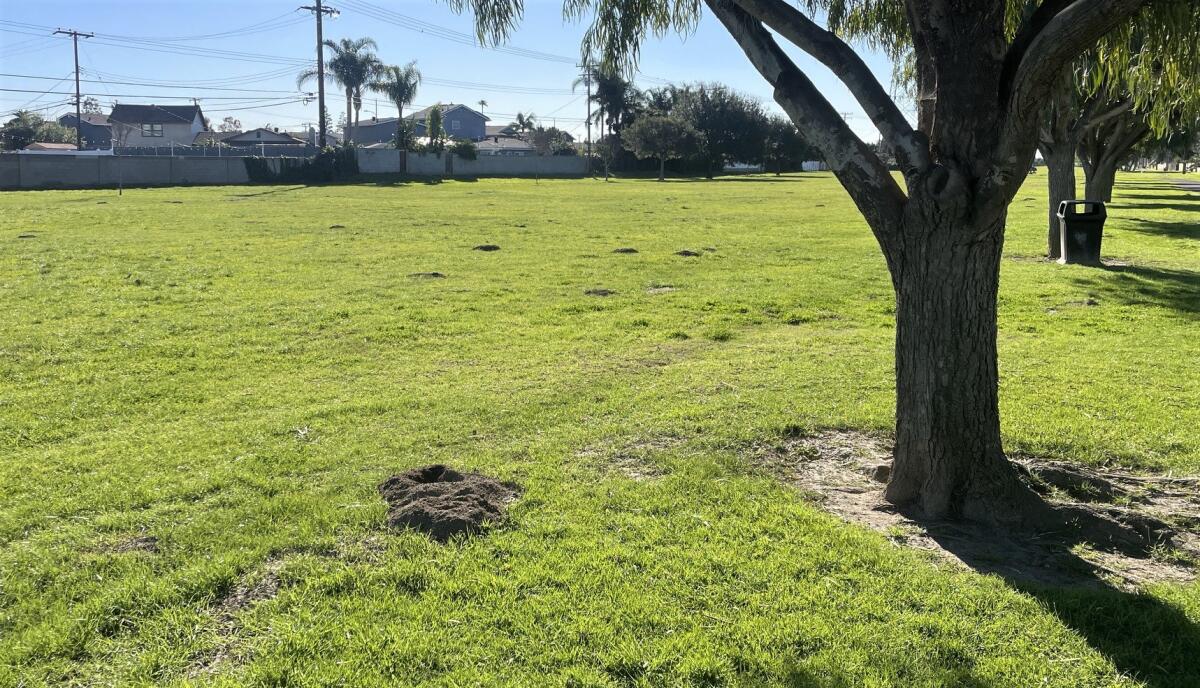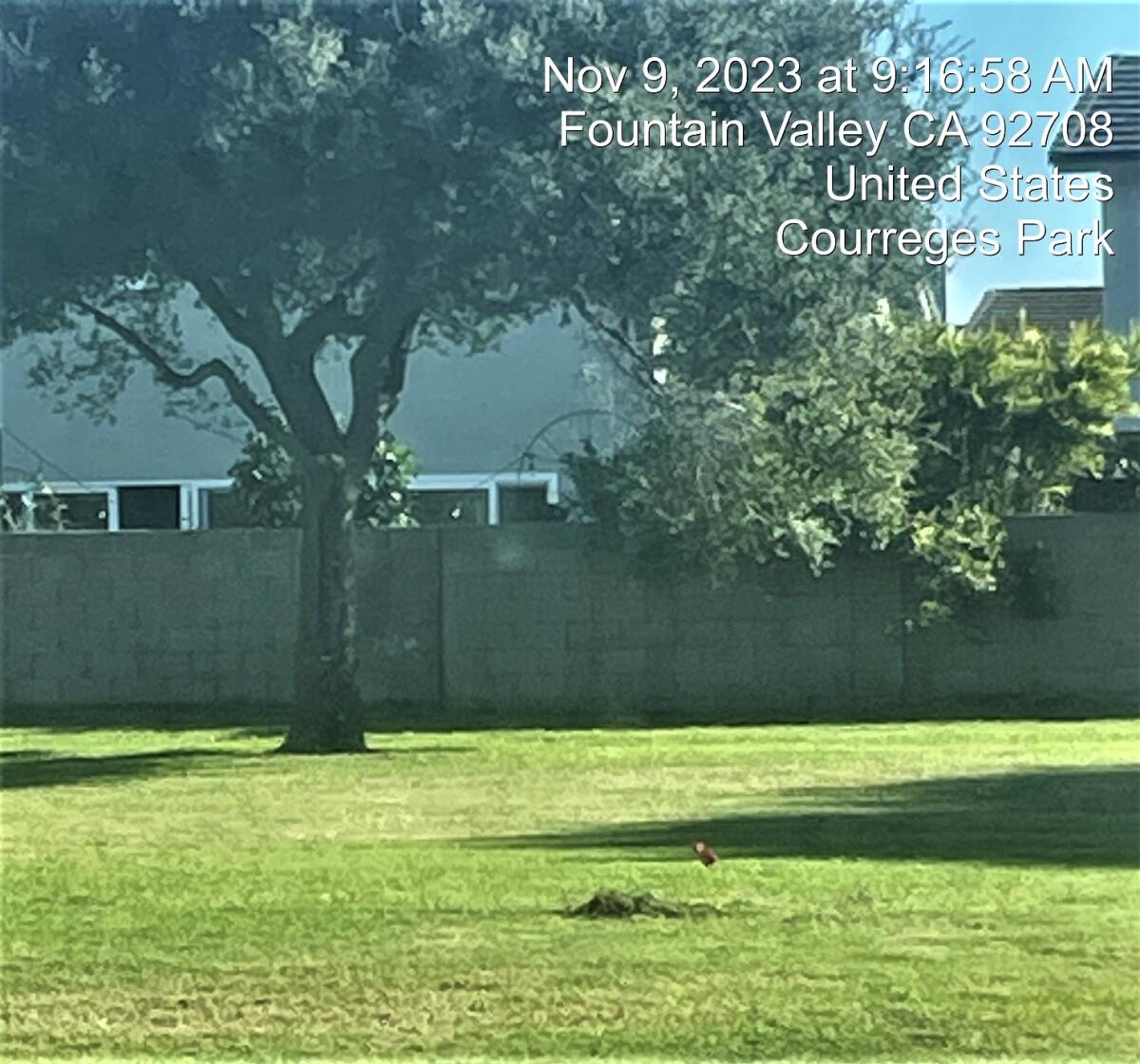How do you solve a problem like a gopher? Fountain Valley is learning through experience

- Share via
How do you solve a problem like a gopher? In the city of Fountain Valley, rodents digging networks of subterranean tunnels that compromise the soil integrity of local parklands have been an ongoing challenge for public works employees.
“They burrow all day long, so there are shallow tunnels that can create risks if they do cave in,” said Mark Sprague, a field services manager for the city. “They mostly feed on the roots of plants. They also chew irrigation lines. It’s caused a lot of problems both privately and publicly.”
Visitors to Los Alamos Park, Harper Park and the city’s Sports Park near Mile Square Regional Park — identified by city staff as gopher “hot spots” — may have seen signs of the rodent’s presence in the area, including cones and markers placed near tunnels.

Officials have for years contracted with an area landscaping company to trap and remove the critters. But recently, an observed increase in gopher activity is popping up in residential neighborhoods.
Fountain Valley City Councilman Jim Cunneen said it’s common for residents to air gopher grievances at City Hall, sometimes speaking in public comments at council meetings, or to bring up the subject at local functions.
“It’s not unique to our city, but something has triggered a rise in the population of gophers in our parks,” he said Friday. “A lot of people in our neighborhood are dealing with gophers. You can see it in some of the front lawns of our neighbors.”
Cunneen has lived for the past three decades near the city’s Los Alamos Park on a street named La Marmota Avenue, the Spanish word for groundhog. Although he recalled having issues with the animals in the ’90s, his backyard was pretty calm until the recent population explosion.
“We have at least 30 holes gophers have chewed,” he said. “They take out a 3- to 4-inch diameter patch, and they’re also burrowing so the surface becomes uneven — it’s horrible.”
City officials reported last week on social media gopher mitigation efforts are in full swing at local parks. Where a typical month may bring in 15 to 20 animals, last month more than 40 trappings were logged, according to Sprague.
Cunneen said extermination companies tend not to deal with gophers, requiring residents to seek out services that offer to remove the animals by trapping them. It’s unclear, however, what happens once an animal is captured.
Representatives of Merchants Landscape Services, which handles landscaping for Fountain Valley and its more than 150 acres of park space under an $873,000 annual contract, did not immediately respond to a request for that information. But one local wildlife expert offered some advice.
Debbie McGuire, executive director of the nonprofit Wetlands & Wildlife Care Center in Huntington Beach, maintains state laws prohibit the relocation of many small animals and rodent species into different habitats. She said many removal companies end up humanely euthanizing the animals they trap.
One explanation for the rising gopher population may be a decline in the presence of predators who feed on them, such as bobcats and coyotes or birds of prey like barn owls.

“Gophers are really important for the ecosystem. They move the soil around and keep roots aerated so plants stay healthy,” McGuire said Friday. “But there are times when there are no predators to keep their population down, and they’ll get out of control.”
She suggested city employees or residents in Fountain Valley might look into installing nesting boxes in public parks and residential neighborhoods to attract animals like the barn owl, which prey on gophers but leave larger animals, like cats and dogs, undisturbed.
A number of organizations and resources can be found online, including the Barn Owl Box Co., which sells nesting boxes and instructs people how to build their own.
“The best thing is to leave nature alone and let the circle of life take care of things,” McGuire advised.
All the latest on Orange County from Orange County.
Get our free TimesOC newsletter.
You may occasionally receive promotional content from the Daily Pilot.









